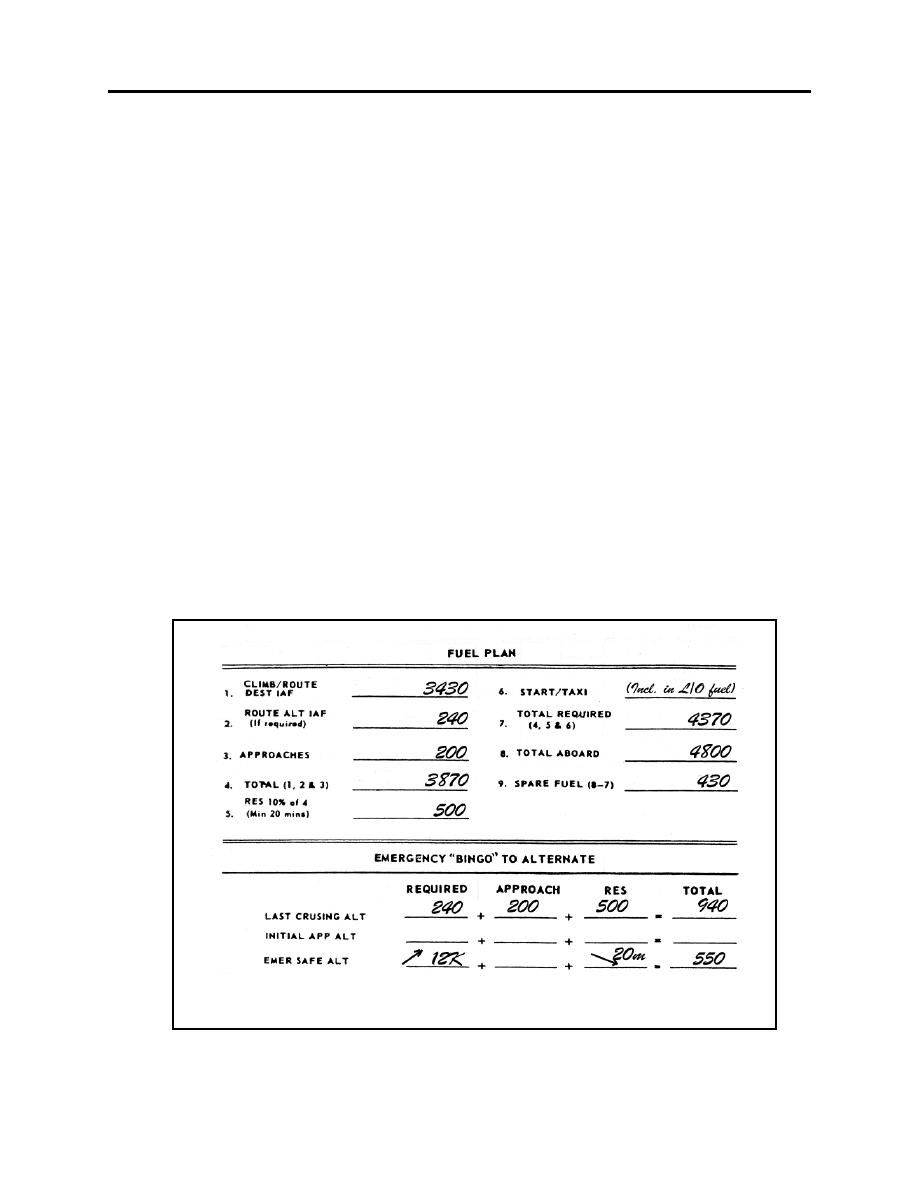 |
|||
|
|
|||
|
|
|||
| ||||||||||
|
|  STUDENT GUIDE
VISUAL NAVIGATION
6.7. JET LOG CONSTRUCTION:
6.7.1. Basically the same as a T-34 VNAV jet card, the T-1A/T-39 VNAV jet card reflects
higher fuel flows, greater distances, and typically two low-level portions. When stereo routes are
flown with two students, each student will have a jet card, differing only in how each student
rounded fuel and time data. Remember all IFR portions are computed using best available wind
information (forecast within 12 hours of flight). Some additional points to consider when
preparing your jet card are:
6.7.1.1. First line on card represents initial climb fuel plus the 200 lbs. for STTO (Figure 6-17).
As a result, the fuel plan on the back of the card will show item 6 blank, as this fuel is included
in item 1. (Figure 6-16)
6.7.1.2. For sorties returning to NPA from VR-1020, a divert profile at "Initial Approach
Altitude" is not required as such would be impractical in flight. However, this profile is required
for most other sorties. Also, use the same emergency fields on the jet card as identified on the
chart!
6.7.2.3. When an ANAV profile is planned prior to low-level, such as in the case of AVX-2, a
problem occurs when computing expected IAF fuels in flight due to the different fuel flows
experienced (1200pph vs. 1800pph). To accommodate this, on the first portion of the card
annotate the total time to the entry point rather than the time to the final IAF. In flight ANAV
IAF fuel computations are made by determining EFR for the entry point, then subtracting the
total fuel planned for the route from entry point to IAF.
Figure 6-16
6.7.2. The following descriptions refer to Figure 6-17, sample NPA-500 jet card:
6-23
|
|
Privacy Statement - Press Release - Copyright Information. - Contact Us |